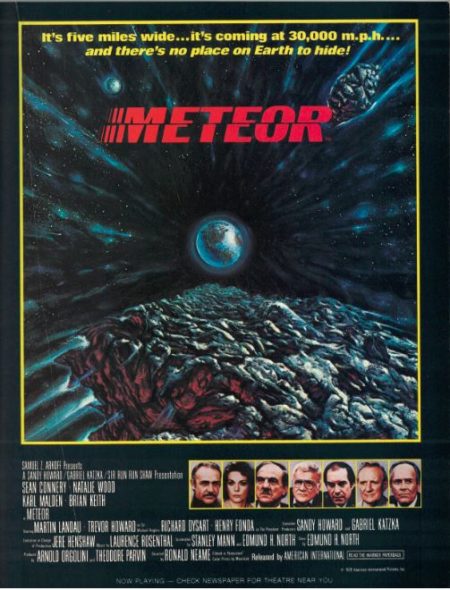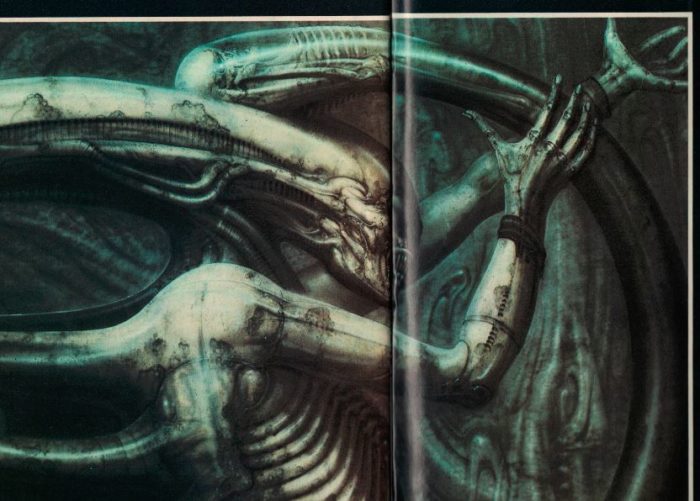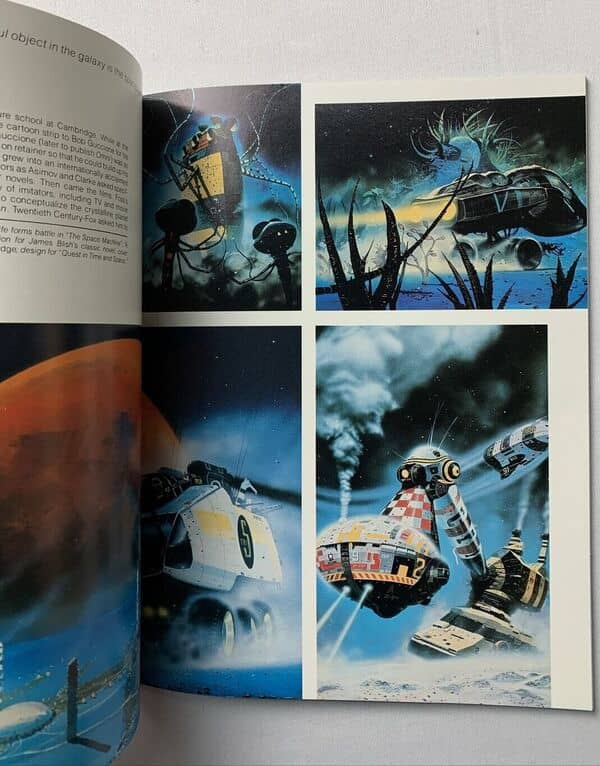Omni Magazine, November 1979: A Retro-Review
Worst Cover Ever
I will admit that I was very nervous about delving into Omni Magazine. For years, decades! I’ve heard people talk about Omni in breathless tones of awe! Yet I knew very little about it. Not to say that it was entirely unknown to me; I have distinct memories, back in like 1983, of being at the doctor’s office and they had several issues of Omni in the waiting room. I even flipped through some of them. Here is what I remember:
Omni Magazine was owned by Bob Guiccione, who also owned Penthouse Magazine, and Omni was full of ads for Penthouse. Like it should have come with a little placard that gave you instructions on how to rent a PO box and a chart where you could tick off the years/months until you turned 18 and could get a subscription to Penthouse… ahem… not that I ever did anything like that myself.
The November 1979 Omni was remarkably free from ads for Penthouse, so maybe it was a mid-80s thing?
Another thing that gave me pause about Omni was that it was huge! Not the four by six of the pulps, and not the ¼ inch thick Galileo, either. There is no other way to say it, Omni had a girth that I wasn’t sure I could handle.
Turns out that I needn’t have worried — easily half of Omni is advertising and the other half is a quarter advertising; cigarettes, mostly, but a fair share of whiskey and cars, too. Of the remaining space, a large portion of it is given up to articles and pseudoscience essays. At the end of the day, November 1979 Omni has very little fiction, only two pieces, although it also has two sci-fi related pictorials. I don’t know if this fiction desert is standard fare for the magazine or if it was a one-off.
The Arts: Film Review
Oh, the late 70s science fiction movies! The power of green-screen special effects had been firmly established in 1977’s Star Wars, but what was established shortly thereafter is that good special effects are not cheap, and not easy.
The incestuous nature of the special-effects field was obvious. Moonraker’s director, Derek Meddings was winner of this Academy Award for Superman, and Alien’s team shifted over almost intact to The Empire Strikes Back!
They take a look back on the movies of 1979, divided into broad categories:
Alien Invasions
With the film companies putting their big money for the next season behind space operas, little was left over for horror chillers.
The Dark, The Gendarme and the Extraterrestrials, Time Warp, and Foes. I remember absolutely none of these movies.
Science Gone Awry
Despite all the publicity nuclear power has received in recent years, it took two accidents to bring the problem to the fore this year. If the China Syndrome had been released after the Three Mile Island accident, it would have been considered a rip-off. If there had been no film, the excitement might have died down sooner.
The Boys From Brazil, Shock Waves, Prophecy, Incredible Melting Man. I remember The Boys from Brazil, which I saw on TV. Prophecy was one of those movies that you couldn’t escape on TV in the early 80s. People ask me if I’m worried about bears when I go backpacking. No! I’m worried about mutant bears, as any educated person should be!
The Supernatural
Whether by coincidence or through timely planning, the past year has seen 12 vampire films in circulation.
The Amityville Horror, Halloween, Dawn of the Dead, The Exorcist, The Wicker Man. As noted above, there were also a lot of vampire movies. A. Lot.
Documentary
Neglected for the past decade, the documentary seems to be on the ascendancy again, especially in science.
They then cite a bunch of things I’ve never heard of. Dolphin, Gizmo!, The Late Great Planet Earth (I may have caught this on TV), No Act of God, and The Space Movie.
Fantasy
Fantasy films are slowly gaining in budgets, creativity , and audience levels and may rival the hardware film or for leadership during the 1980s.
Time After Time, Americathon, with looking forward to Steven Spielberg’s 1941 and something called Conan directed by some guy named Milius. In addition to mutant bears, I also fear time-traveling serial killers.
Stars: Science Column
A short article about the Soviet KRT 10—the first full-sized radio telescope launched into space. The article wears both its cold-war fears and pseudoscience thinking on its sleeve.
If it’s quick, convenient exchanges we want, we must look into such exotic techniques as telepathy and teleportation. I am no long believer [SIC] in flying saucers, but I doubt that contact by on of these unproved technologies is quite out of the question.
Which leads us conveniently to
Column, UFO Update
Omni not only reports on the UFO situation, it was actually involved in it!
[…] Omni acquired two metal samples purported to be extraterrestrial. The bizarre circumstances surrounding their discovery led the magazine to commission an analysis by the Massachusetts Institute of Technology in Cambridge.
The results? Inconclusive! Well, not quite, Dr. Robert Oglivie, professor of metallurgy at MIT stated: “It is therefore quite possible that the specimen from Brazil was a piece of a weld metal from an exploding aircraft or a reentering satellite”.
Science Article: Antimatter Revealed, by Robert L. Forward
This article really gets off on the wrong foot by claiming that “Every time you burn a liter of gasoline, mass disappears.” Not the case! The mass is re-arranged and energy from the chemical bonds in that mass is released.
From there he goes into matter/anti-matter reactions, where mass would be eliminated. He then surveys particle accelerator research from various countries. Of course, it takes a lot of energy to make antimatter, so… where will that initial energy come from? Solar, they assume. Also (and this is interesting) they note that the initial idea of equal amounts of matter/antimatter would be overkill for most travel applications. Thus they estimate that you would use your antimatter annihilation reaction to heat a much larger mass of matter (hydrogen or water), which would be your reaction mass.
Article: Dream House
Solar power! Well, solar power of the 70s. Okay kids, back in the 70s everyone carried McSpoons for their cocaine, and when people talked about “solar power” they weren’t talking about photo-voltaic cells—that was for NASA and satellites and science-y stuff! By “solar power” they meant stacking water barrels up in the sunny side of the house and using that warm water to heat the floors and maybe, if you’re lucky, it might be warm enough to wash dishes in or bathe in. The article is about a builder (Tom Smith) trying to build houses that use the sun to cut down on the overall bills. There is discussion of designs mostly about design, houses-within-houses, facing them the right way, all that. Kind of like a cut-rate earth-ship. An earth-dinghy, perchance. Sill, I give the guy an “A” for effort.
Fiction: The Number of the Beast, by Robert A Heinlein, Art by Colin Hay
Finally, on page 56 we get some fiction! And by an SF Grand Master, no less! Sadly, I was disappointed in this story, and some of that is not entirely the story’s fault.
Omni was serializing the book, and this is part two, so even with the ‘What Has Come Before’ intro, I felt a little disconnected from the characters and events. What is the story’s fault is that it had a double-helping of that irritating ‘thinking-outside-the-box geniuses could do great things if The Man would just get outta the way” vibe. Beast has two geniuses:
Genius #1, Professor Jacob Burroughs, a brilliant mathematician, and geometer who has invented a device that can travel not only through space but through time, from universe to universe.
Genius #2 Zebadiah John Carter, one of the few mathematicians in the world who can understand Jacob Burrough’s six-dimensional non-Newtonian equations.
So Jacob Burroughs has this device, and Z. J. Carter has some kind of space car (Are space cars common in the setting of the story? No idea!) that they eventually hook it up to. There is also a shadowy cabal of spooks and/or aliens trying to stop them.
This excerpt is not helped in that almost the entire thing takes place as they are all holed up in Dr. Burroughs’ Grand Canyon redoubt doing this weird John Carter of Mars cosplay (by which I mean, running around naked, because that’s how things go in Burrough’s John Carter of Mars books), with Burroughs’ new wife and his daughter.
Yeah… kinda creepy. Also, all the Burroughs JCM references grow tiresome quick.. Also tiresome, the tendency for all the characters to do a thing, then explain the staggering logic chain that led to their genius decision. Finally, as is relatively common in the late 70s science fiction, waaaaay more time is spent on programming the onboard computer to respond to questions and commands with vaguely sexual innuendo.
Finally and lastly, Heinlein alternates between the four character’s POVs to absolutely no affect because they are all completely the same — you can’t tell one from the other.
They install the multi-verse device to the space-car, murder a park ranger who happens to be an alien in-disguise, realize that there are aliens-in-disguise among humans (which, like everything else, doesn’t phase them much), then they are off to Mars, to get away from the aliens on Earth.
I believe this excerpt crystalizes my issues:
“In that case, Jake, you and I and the gals should scram out of here-not to there-then. Be missing. How long has our pressure test been running? What time is it?”
“Seventeen-seventeen,” Deety answered instantly.
I looked at my wife. “Naked as a frog. Where do you hide your watch, dearest? Surely not there.”
She stuck out her tongue. “Smarty, I have a clock in my head. I never mention it because people give me funny looks.”
“Deety does have an innate time sense,” agreed her father, “accurate to thirteen seconds plus or minus about four seconds; I’ve measured it.”
“I’m sorry, Zebadiah, I don’t mean to be a freak.”
“Sorry about what, Princess? I’m impressed. What do you do about time zones?”
“Same as you do. Add or subtracted as necessary. Darling, everyone has a built-in circadian. Mine is merely more nearly exact than most people. Like having an absolute pitch — some do, some don’t.”
“Are you a lightening calculator?”
“Yes, but computers are so much faster that I no longer do it much. Except for one thing. I can sense a glitch — spot a wrong answer. Then I look for garbage in the program. If I don’t find it, I send for a hardware specialist. Look, sweetheart, discuss my oddities later. Pop, let’s dump that thing down the septic tank and go. I’m nervous, I am.”
The ‘thing’ referenced is the mostly-dissected alien, by the way.
Art Article: Artwork by Manfred Kage, written by Herbert Franke
Art based on some of the new (at the time) microscopic imagery coming out at the time. Pretty cool, honestly.
Actually, this has been going on for a while.
In 1959 Kage founded the Institute for Scientific Photography and Cinematography, pioneering new methods of crystal photography with the aid of two Zeiss lenses specially provided for him.
Fiction: “Malthus’s Day,” by Jayge Carr, artwork by Wofgang Hutter
In the Pavlova Village of an unnamed planet’s colony, the somewhat frivolous pursuits of the inhabitants are upended by the appearance of a child. There are not many children in the future. While there is a lot of sex, The Man has taken the responsibility of actual reproduction. Children are shared around the colonies, live with a family for a while, and then get carted off to the next colony/family. From the way the story is set up is the system seems to work really well; until The Man throws a curveball by sending, not a child, but a baby—something nobody in a couple of generations has actually seen.
There is a lot of official security and interviews and trying to get good T.V. coverage of the event. Jayge Carr invests a lot of words into showing how the people of the future are very selfish and don’t know the first thing about an actual baby.
Janica was preening. She was taking advantage of the attention and the ‘porters by running through a whole series of her warm-up routines. When that palled, she took off her brightly colored halter top and dragged it by one tie enticingly near the baby. With a crow of triumph, the baby staggered toward the brilliant fluttering cloth. Laughing, Janica backed up, keeping the fascination just out of the reach of the chubby fingers.
The thing is, humans, some humans, get very attached to babies. In this case, one of the last couples that got the baby for the day hatch a scheme to steal him and keep him permanently. A plan that fails stunningly and confuses the already addled pair of parents and dramatically increases the paperwork of the The Man’s baby-escorting professionals.
Jayge Carr is a pen-name for a woman named Margery Ruth Morgenstern Krueger, who broke into the writing game in 1976 with a sale to Analog. She was also a NASA nuclear physicist and she wrote on and off most of her life. The only story of hers I recognize is “Webrider” in Pmaela Sargent’s Women of Wonder, the Contemporary Years, the 1970s to the 1990s.
Interview: Carl Sargent
Carl Sargent was Cambridge University’s first Ph.D. in parapsychology.
As can be guessed, Mr. Sargent’s parapsychological researches were somewhat loosey-goosey, maybe even a little ranky-janky. He didn’t last long in the role. According to Wikipedia, after playing Dungeons and Dragons in 1978, ‘ Sargent authored various Fighting Fantasy gamebooks and novels for Games Workshop from 1988- 1995, some under the name of Keith Martin, and ended up doing a lot of work for TSR and Warhammer.
Article: Illegal Aliens, by Robert Freitas Jr
With art by H.R. Giger (who reminds the reader that the Xenomorph is made of dicks), this article delves into just where aliens (from space) fall into our legal framework. Short answer, they don’t, and it will be a huge hassle should we ever encounter any.
Art Survey, 21st-Century Foss
One distinct advantage that Omni has is that, being full color and high definition, it can really rock the artwork — which is just what you want in a survey of Chris Foss.
An interesting bit of trivia:
While at the university (architecture school of Cambridge), Foss sold a six-page cartoon strip to Bob Guiccione for his British Penthouse magazine. Guccione (later to publish Omni) was so impressed that he put the artist on retainer so he could build up his portfolio. Within six years Foss grew into an internationally acclaimed Science-Fiction artist. So that’s something else I owe Guccione thanks for!
Product Review: Cyber Fun!
Ah man, the electronic toys of the late 70s! The Zodiac, the Big Trak, and the irritable four-tone siren that is Simon. The article doesn’t just hit the headliners, but delves deep into the offerings of the late 70s. ‘Microvision’ an LCD screen to replicate Pong was $30 (although it did apparently come with cartages you could swap out)!
The November 1979 Omni let me down. Perhaps it could have never measured up to my expectations? Perhaps… but I don’t think it would have been too much to ask for it to have had more than two pieces of fiction.
Previous entries the Quatro-Decadal Reviews include:
1969
Amazing Stories, November 1969
Galaxy Science Fiction, November 1969
The Magazine of Fantasy & Science Fiction, November 1969
Worlds of If, November 1969
Analog Science Fiction/Science Fact, November 1969
Venture Science Fiction, November 1969
A Decadal Review of Science Fiction from November 1969: Wrap-up
1979
Quatro-Decadal Review, November 1979: A Brief Look Back
The Magazine of Fantasy & Science Fiction, November 1979
Galileo, November 1979
Analog, November 1979
Asimov’s Science Fiction, November 1979
Amazing, November 1979
Adrian Simmons is an editor for Heroic Fantasy Quarterly, check out their Best-of Volume 3 Anthology, or support them on Patreon!















No, it was really the case that most issues of the magazine featured only two or even one short story.
You picked too early of an issue though. The magazine didn’t get really good until Ellen Datlow took over as editor in the mid-1980s.
You never knew exactly what fiction Datlow was going to publish, but it was almost always guaranteed to be high quality.
I know you won’t get the vintage experience, but I’d recommend looking for the different Datlow edited Omni anthologies published in the ‘80s and ‘90s.
You get a nice chunk of the best short fiction published in Omni all together in one book.
Chris V, whenever I’ve heard of OMNI, it’s always been the Ben Bova days. I probably just hit them on a weak issue.
I was an Omni reader back in the day. And I remember this issue, principally due to the Heinlein piece. The most jaw-dropping aspect of Number of the Beast was having the alien autopsy conducted by the professor’s wife, who spotted the minor internal organ discrepancies that proved the subject was Not Of This World … because she took a bio course in college. Which, to give her her due, is more bio than the televised alien autopsy crowd seemed to manage to cram in.
Oh, and “Deety” (of the impressive internal clock) stands for “D. T.”, for “Dejah Thoris” (naturally).
Eugene- re: autopsy, that sounds about right, although I think the alien also had both male and female reproductive parts. Anyway, the whole autopsy thing just seemed really bizarre in that half the people in the room are naked and nobody is so much as wearing a mask or gloves.
Re: Deety/Deja Thoris– ugh, it was really past the point of diminishing returns at that point.
That said, this was probably not the best section of the book to come in on, they were in one location trying to get on with their lives and kinda-sorta investigating the mysterious set of circumstances that got them there. Maybe the preceding or following sections are All That.